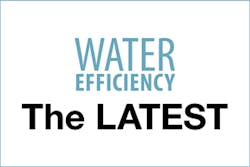Water Environment Research Open Access Article Explores Phosphorus Removal Methods
The open access article in the November 2017 issue of Water Environment Research (WER) compares various approaches to enhanced biological phosphorus removal.
“In their paper on enhanced biological phosphorus removal (EBPR), Barnard et al. propose that conventional EBPR configurations may actually select for less efficient phosphate accumulating organisms (PAOs) than alternative configurations,” said Tim Ellis, WER editor-in-chief. “They provide evidence that the class of PAOs termed Terasphaera can provide more efficient EBPR including anoxic polyphosphate uptake and utilization of more complex substrates. The authors discuss the growth conditions favorable to PAOs and propose several different alternative plug flow configurations for efficient phosphorus removal.”
Selected WER articles such as this one are available free to the public on a monthly basis through an open-access program. In addition, authors can pay a fee to make their accepted articles open access. Click here to download “Rethinking the Mechanisms of Biological Phosphorus Removal” by James L. Barnard, Patrick Dunlap and Mark Steichen.
Published by the Water Environment Federation since 1928, WER is a popular professional journal that features peer-reviewed research papers and research notes, as well as state-of-the-art and critical reviews on original, fundamental, and applied research in all scientific and technical areas related to water quality, pollution control, and management.
Originally known as the Sewage Works Journal, WER is available in both print and online formats and receives approximately 400 new research submissions each year.
About WEF The Water Environment Federation (WEF) is a not-for-profit technical and educational organization of 34,000 individual members and 75 affiliated Member Associations representing water quality professionals around the world. Since 1928, WEF and its members have protected public health and the environment. As a global water sector leader, our mission is to connect water professionals; enrich the expertise of water professionals; increase the awareness of the impact and value of water; and provide a platform for water sector innovation. To learn more, visit www.wef.org.
